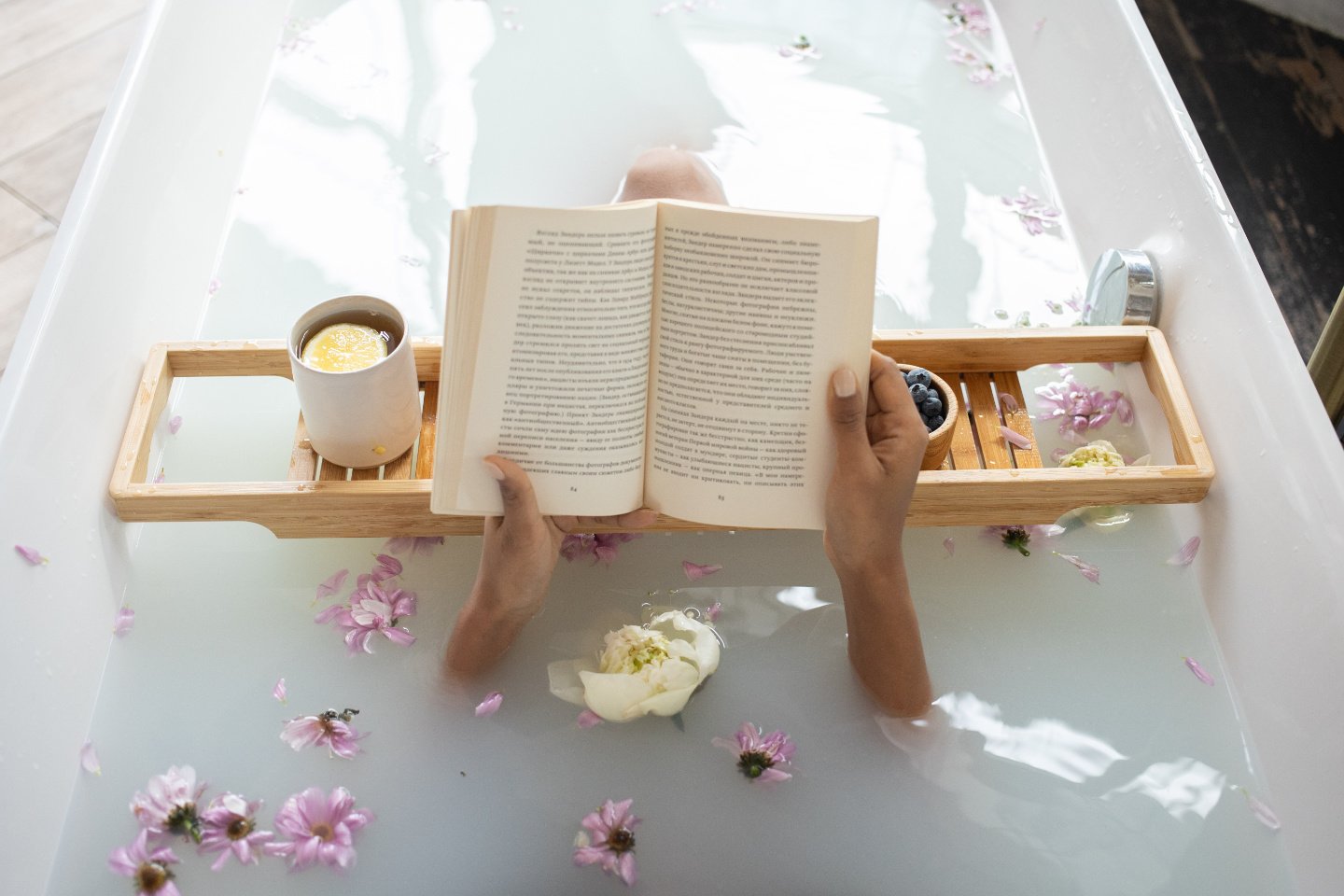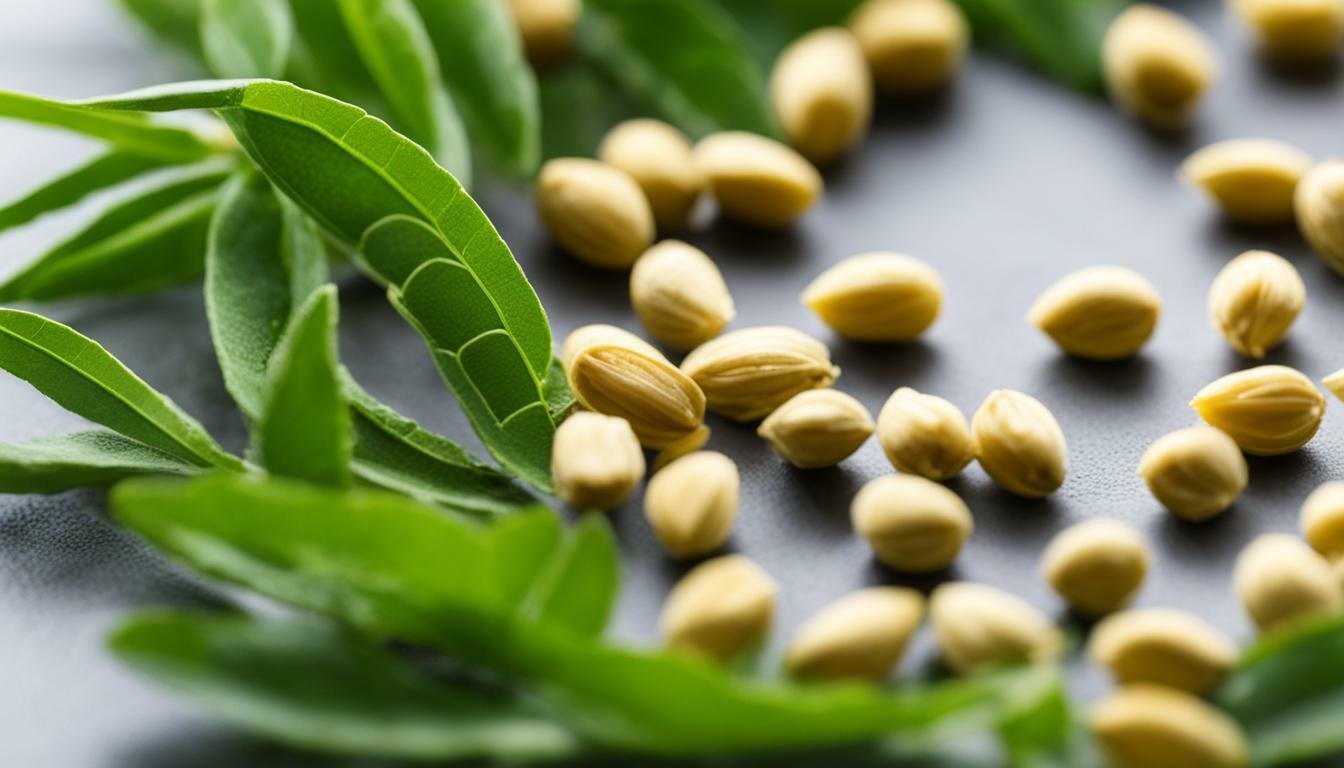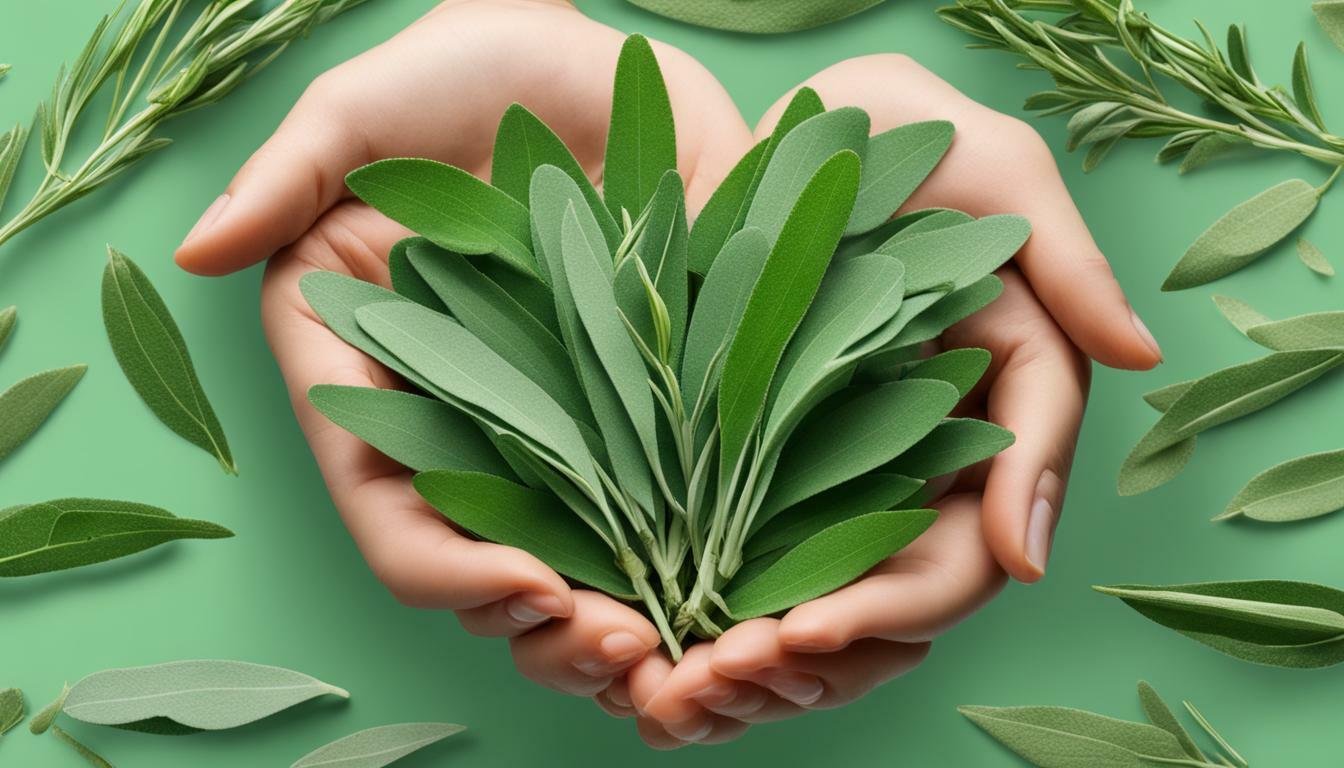The Healing Benefits of Herbal Baths for Medicinal Purposes
Herbal baths have been used since ancient times as a natural way to treat various conditions and promote overall health and wellbeing. Infusing bath water with herbs provides a route for absorbing the powerful medicinal compounds in plants through the skin.
Today, herbal baths are regaining popularity as a therapeutic and complementary approach alongside modern medicine. Harnessing the synergistic effects of water, heat, and botanicals can effectively relieve symptoms, speed healing, and enhance wellness.
I must admit that I don’t indulge in them as often as my wife does. While she enjoys her relaxing bath in the tub regularly, I find myself drawn to it only on rare occasions. However, I’ve come to truly appreciate the incredible benefits of herbal baths, especially after a long day spent in the garden, tending to the soil and plants, with tired legs yearning for some relief.
Key Points:
- Herbal baths provide an accessible way to harness the power of medicinal plants.
- Infusing bath water with herbs allows absorption of active compounds through the skin.
- Chamomile, eucalyptus, lavender and other herbs offer therapeutic benefits.
- Herbal baths can help treat conditions ranging from muscle pain to skin irritation.
- With proper preparation and precautions, herbal baths are generally safe and effective.
What is an Herbal Bath?
An herbal bath is a warm water bath into which dried or fresh healing herbs have been added. The active organic compounds from the medicinal herbs infuse into the bathwater where they can be absorbed through the skin. Herbal baths leverage the direct route to the bloodstream that skin absorption provides.
Herbal baths can be prepared using individual herbs or customized herbal blends. They are used therapeutically and medicinally for targeted benefits as well as for general health promotion. Herbal baths are also valued for inducing relaxation.
Benefits of Herbal Baths for Medicinal Purposes
Research shows that medicinal herbs delivered through baths can provide benefits including:
- Alleviating pain and inflammation
- Calming the nervous system and reducing stress
- Promoting restful sleep
- Treating skin irritations and conditions
- Healing wounds and abrasions
- Boosting immunity against colds and flu
- Relieving congestion and respiratory issues
- Easing headaches and migraines
- Regulating hormonal imbalances
The moist heat and absorption of the herbal phytochemicals produces measurable therapeutic effects for a variety of conditions. Herbal baths are a holistic, chemical-free way to harness the power of plants for healing.
How to Choose the Right Herbs for a Medicinal Bath
Selecting the appropriate herbs for your medicinal bath is key to getting the desired therapeutic effects. Here are some tips:
- Determine your goal – Are you aiming to ease anxiety? Relieve muscle pain? Improve skin health? Pinpoint your wellness objective first.
- Research herb properties – Consult reputable resources to learn which herbs have properties that align with your goal. For example, chamomile and lavender for stress relief or eucalyptus and peppermint for respiratory issues.
- Consider safety – Ensure the herbs are safe for your particular situation. Pregnant women should exercise caution and seek medical advice first. Some herbs like sage and oregano are very stimulating and can be irritating used in baths.
- Use high quality herbs – The potency of medicinal herbs depends on factors like when they are harvested and how they are processed and stored. Purchase organic herbs from trusted suppliers to get the maximum benefits.
- Start with gentle options – If new to herbal baths, begin with mild, soothing herbs like chamomile or oatmeal. Monitor your skin’s sensitivity before trying more warming or stimulating botanicals.
- Try targeted blends – Look for synergistic herbal combinations formulated for specific purposes, like tension relief or inflammation reduction. Many companies sell pre-made medicinal blends.
- Talk to an herbalist – Consulting a trained herbalist can help you safely select the right medicinal herbs for your individual health status and needs. An herbalist can create custom bath blends.
Taking this care in choosing herbs significantly increases the therapeutic potential of your herbal bath.
How to Prepare a Medicinal Herbal Bath
Preparing a proper medicinal herbal bath ensures you safely receive the full benefits from the herbs. Follow these steps:
- Add loose herbs – For loose herbs, place 2-4 tablespoons in a bath sachet or tie in cheesecloth. This prevents herbs dispersing in the bath water.
- Use tea bags – For convenience, you can simply add 5-10 medicinal herbal tea bags directly to the bath. Make sure they are pure herb teas, not flavored bagged tea.
- Infuse first – Before getting into the tub, add your herbs or tea bags and allow them to infuse for 20-30 minutes. This gives time for the beneficial compounds to be released into the water.
- Monitor temperature – Keep the bath water pleasantly warm, around 98-100°F, but not excessively hot to avoid irritation.
- Soak correctly – Recommended soaking time is initially 15-20 minutes, working up to 30 minutes. Set a timer and don’t fall asleep in the bath.
- Hydrate – Drink some water before and after bathing to prevent dehydration. Herbal baths can draw water from the body.
- Rinse off – Once finished, rinse your body to remove any herb debris that could cause skin irritation or staining.
- Clean the tub – Remove any remaining herbs in the tub and clean thoroughly after to avoid staining.
Follow this routine to safely gain the optimal healing effects from your therapeutic herbal bath.
Common Herbs Used in Medicinal Baths
Many herbs have therapeutic properties that make them beneficial additions to medicinal baths. Some of the most popular and effective choices include:
Chamomile
- Soothes skin irritations and rashes
- Anti-inflammatory effects
- Mild sedative that relieves anxiety and aids sleep
Lavender
- Promotes relaxation and relief from stress
- Improves sleep quality
- Anti-anxiety and calming effects
- Analgesic properties ease sore muscles
Peppermint
- Cools and revives skin; improves circulation
- Decongestant that clears sinuses
- Alleviates headaches
- Energizing aroma
Eucalyptus
- Decongestant that opens airways
- Antimicrobial effects fight infection
- Analgesic qualities relieve muscle and joint pain
- Aids respiratory issues
Calendula
- Anti-inflammatory and antimicrobial
- Accelerates healing of wounds, burns, abrasions
- Soothes and softens dry, irritated skin
- Benefits eczema, psoriasis, and rashes
Oatmeal
- Soothes and hydrates itchy, inflamed skin
- Natural cleanser that removes dirt and oil from pores
- Softens and protects dry, damaged skin
- Relieves sunburns, bug bites, and allergic reactions
Epsom Salt
- Eases sore, tense muscles
- Relaxes the nervous system
- Reduces inflammation
- Provides magnesium to aid sleep, mood, and more
Medicinal Actions of Common Herbal Bath Herbs
| Herb | Key Medicinal Actions |
|---|---|
| Chamomile | Anti-anxiety, anti-insomnia, anti-inflammatory, skin soothing |
| Lavender | Reduces stress, aids sleep, analgesic, antimicrobial |
| Peppermint | Decongestant, energizing, cooling, analgesic |
| Eucalyptus | Decongestant, antimicrobial, respiratory support, analgesic |
| Calendula | Wound healing, anti-inflammatory, antimicrobial, skin soothing |
| Oatmeal | Skin soothing and healing, anti-itch, hydrating |
| Epsom Salt | Muscle relaxant, anti-inflammatory, magnesium source |
The diverse medicinal actions of these herbs make them beneficial additions to baths for holistic healing and wellness support. Always select high quality, organic herbs for potency.
Choosing the Right Herbs
Select herbs based on your specific health goals:
| Health Goal | Recommended Herbs |
|---|---|
| Sleep aid | Chamomile, lavender, passionflower |
| Stress relief | Lavender, lemon balm, passionflower |
| Pain relief | Peppermint, eucalyptus, ginger |
| Cold/Flu | Eucalyptus, peppermint, elderberry |
| Skin irritation | Oatmeal, calendula, chamomile |
| Inflammation | Turmeric, ginger, calendula |
| Cramps/spasms | Peppermint, ginger, celery seed |
Herbs can be used solo or blended for customized medicinal baths. Always select high-quality herbs from reputable sources.
How to Prepare a Medicinal Herbal Bath
Herbal Bath Tea Bags:
- Add 5-10 tea bags directly to warm bath water
- Allow to infuse for 20-30 minutes before getting in
- Recommended for convenience and easy cleanup
Loose Herb Bath:
- Place 2-4 tablespoons of dried herbs in a sachet/cheesecloth
- Tie sachet and add to bath, infusing 20-30 minutes
- Ensure herbs are fully contained to avoid tub staining
Essential Oil Bath:
- Add 5-10 drops essential oil to bath
- Disperse oil in water before getting in
- Use therapeutic grade, skin-safe oils only
No matter the preparation, allow enough time for the medicinal compounds to fully infuse into the bath water to receive the full benefits.
Taking a Medicinal Herbal Bath
Once you’ve added the herbs and given them time to infuse, follow these tips for a safe, effective medicinal herbal bath session:
- Test the temperature before getting in. Around 98-100°F is ideal. Avoid extremely hot water which can irritate skin.
- Ease yourself slowly into the tub. Recline in a comfortable position ensuring your body is submerged as much as possible to absorb the herbal compounds.
- Set a timer for your desired soak time. Start with 15-20 minutes, gradually increasing to 30 minutes max as your body adjusts. Don’t fall asleep during long soaks.
- Relax and breathe deeply to enhance circulation and absorption of the herbs. Visualize the medicinal herbs working to provide healing effects.
- Drink some cool water while bathing to offset dehydration from the hot water. Herbal baths can draw fluids from the body.
- After your timer goes off, stand up slowly and carefully leave the bath. Avoid getting overheated.
- Rinse your body thoroughly with cool water to remove any herb particles that could irritate skin or stain towels.
- Pat dry gently and wrap up in a robe or blankets. The pores remain open after bathing so keep warm.
- Record any benefits, changes, or reactions you notice after each herbal bath to optimize your practice.
- Clean out any leftover herbs in the tub and wipe down surfaces to prevent staining from herbal oils.
Proper soaking and aftercare makes herbal baths as safe and beneficial as possible. Listen to your body’s response to fine-tune your ideal routine.
Precautions for Medicinal Herbal Baths
While generally safe, exercise some caution with herbal baths:
- Pregnant/nursing women should consult their doctor first
- Keep water temperature comfortably warm, not hot
- Start slowly and increase exposure gradually
- Rinse off after soaking to remove herb debris
- Avoid getting water in eyes, nose, and mouth
- Stay hydrated before and after bathing
- Listen to your body’s response to identify ideal herbs/timing
By following basic safety tips, you can unlock the healing potential of medicinal herbal baths safely and effectively.
Conclusion
Herbal baths harness the therapeutic power of medicinal plants in a safe, accessible way. Infusing bath water with herbs allows for absorption of active botanical compounds through the skin for holistic healing.
Chamomile, lavender, peppermint, eucalyptus, calendula and other herbs impart benefits ranging from relaxation to treating skin conditions when added to baths. Properly preparing herbal baths and soaking for 15-40 minutes enables the plants’ medicinal effects to occur.
When used with care and attention to safety precautions, herbal baths can be an effective complementary therapy. They leverage the deep knowledge of traditional plant medicine in a modern way. Herbal baths provide a soothing, gentle option for relieving symptoms, speeding recovery, and enhancing overall wellbeing.
Further guidance on preparing and using medicinal herbal baths safely can be found through trusted resources like the American Herbalists Guild and the American Botanical Council. Additionally, consulting a certified herbalist or naturopathic doctor ensures the best and most appropriate herbs for your individual health needs are chosen.
Frequently Asked Questions
How often can medicinal herbal baths be used?
For general health, herbal baths can be enjoyed 2-3 times per week. For treating specific conditions, they can be used more frequently as advised by an herbalist.
How long do the effects of an herbal bath last?
The relaxation and therapeutic effects are usually felt immediately and can last up to 24 hours. Regular use yields the most enduring benefits.
Can herbs stain my bathtub?
Loose herbs can potentially stain light-colored tubs. Use sachets or tea bags and clean tub after to prevent staining.
Can essential oils be used instead of herbs?
Yes, therapeutic grade essential oils offer similar benefits. Use 5-10 drops dispersed in bath water. Perform a skin patch test first.
Is it safe to add herbs to baths during pregnancy?
It’s best to consult your OB-GYN before using herbs in baths while pregnant or nursing. Some herbs are contraindicated.
How do herbal baths boost immunity?
Herbs with antimicrobial and antiviral properties absorbed through the skin can boost immune defenses.
Can herbal baths be safely used on children?
With guidance from a pediatrician, gentle, kid-safe herbs can be used. Always supervise kids and test skin sensitivity first.





